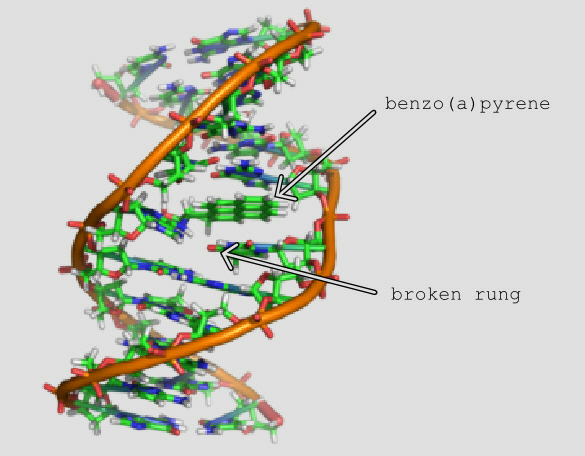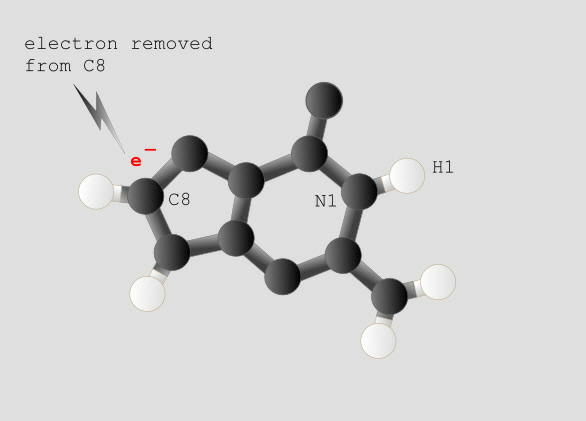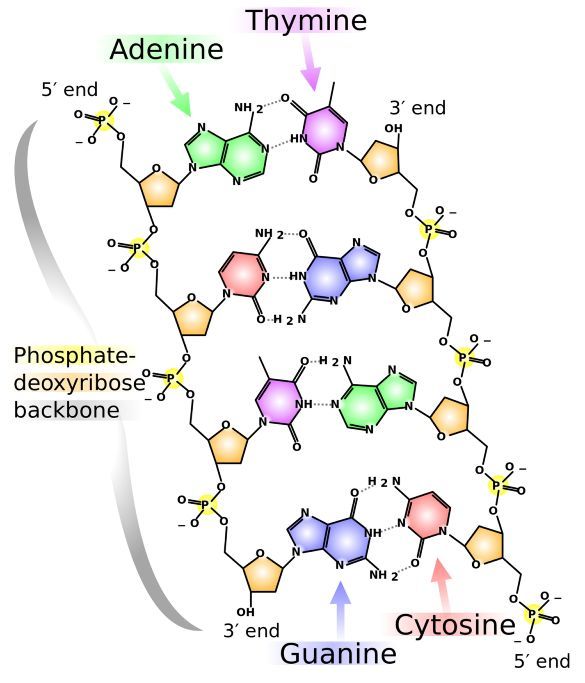The cancer
epidemic is man-made and can be switched off. Most cancers
today, regardless of cancer site, are carcinomas of the
epithelial cells. These are caused by Reactive Oxygen
Species (ROS). ROS remove an electron from DNA which is
then replaced by a carcinogen. By far the most common ROS
is hypochlorous acid. This is routinely added to town and
city water supplies as a disinfectant.
Cancer is a preventable condition. I set up this website as an informational to bring together the various lines of research which are well established by peer review and which make it clear that cancers are not chance events but very much the result of chemical dosing which is deliberately encouraged by public health policy.
The cancer epidemic is an epidemic of a class of cancers called carcinomas. These are oxidative in nature, that is, they require the oxidation of DNA to pave the way for the addition of a carcinogen. My initial reaction to the word "carcinoma" is that it describes something which causes cancer but it is in fact secondary to the cause, which is oxidation. Carcinoma-type cancers are formed by a "redox" reaction which involves, firstly, oxidation (to remove an electric charge) followed by reduction (to add a charge) by the addition of a carcinogen.

This example is the attachment of benzo(a)pyrene at a guanine in DNA, breaking a cross rung as the bonds of that rung are rearranged in the attachment process. Benzo(a)pyrene commonly comes from benzopyrene which is found in cigarette smoke. Benzopyrene converts to benzo(a)pyrene, in which form it is a carcinogen.
There are a great many carcinogens and the list is growing. However, there are very very few oxidizing agents which can damage DNA sufficiently to allow carcinogens to attach. By far the most common oxidizing agent comes from the chlorination of drinking water in the mistaken belief that chlorination makes water safe to drink. It does not.
Official recognition of the problem:
The Environmental Protection Agency (EPA) is the body in the United States (I live in New Zealand) which is responsible for drinking water standards in that country. In 2003 (the year I began my research) they put it the problem this way -
"Chlorine has been widely used as a chemical disinfectant, serving as a principal barrier to microbial contaminants in drinking water. However, the microbial risk reduction attributes of chlorination have been increasingly scrutinized due to concerns about potential increased health risks... new health studies continue to support an association between bladder, colon and rectal cancers from long-term exposure to chlorinated surface water. In addition to cancer effects, recent studies have reported associations between (the) use of chlorinated drinking water and a number of reproductive and developmental endpoints including spontaneous abortion, still birth, neural tube defect, pre-term delivery, low birth weight and intrauterine growth retardation (small for gestational age)... Based on the weight of evidence from both the human epidemiology and animal toxicology data on cancer and reproductive and developmental health effects and consideration of the large number of people exposed to chlorinated byproducts in drinking water (approximately 254 million), EPA concludes that: (1) Current reproductive and developmental health effects data support a hazard concern, (2) new cancer data strengthens the evidence of an association of chlorinated water with bladder cancer and suggests an association for colon and rectal cancers, and (3) the combined health data warrant regulatory action..."
Peer reviewed well controlled study:
The EPA based their view in part on an excellent study by Yang et al, who found that the incidence of carcinomas was greatly increased for people on chlorinated water supplies. This supported a considerable number of previous studies which came to the same conclusion.

Additionally, Yang et al identified the increases in incidence in detail, that is by cancer site. This clearly demonstrated that it is carcinomas which are affected by chlorination. This study is an excellent read both for its design and for the clear results.
Cancer and Heart Failure are both presentations of oxidation:
The connection between chlorination and cancer is becoming better known. Lagging behind this is awareness that heart failure is also a result of chlorination. Cancer and heart failure are regarded as two separate conditions but in fact they are both the result of the same causal factor - oxidation by the chlorination process.
Chlorine as a water disinfectant produces two acids - hypochlorous acid and hydrochloric acid. The former acid we know to oxidise DNA but what is not so well known is that the latter acid, hydrochloric acid, is also related to heart failure. This acid is corrosive to metal pipes and fittings so, almost invariably, a water supply has it's pH adjusted alkaline using lime and this elevates ischaemic heart failure rates. Consequently, the heart failure epidemic is of equal severity to the cancer epidemic.

In 1986 Dr Nathaniel Revis et al published the "Relationship of Drinking Water Disinfectants to Plasma Cholesterol and Thyroid Hormone Levels in Experimental Studies" which clearly demonstrated the expected effect traditional chlorine + pH adjustment of water supplies has on cholesterol. Cholesterol is an antioxidant (and serves other useful functions in addition to being an antioxidant) so the consumption of chlorinated (oxidizing) water can be expected to elevate the production of cholesterol antioxidant from the liver - but the additional factor of pH adjustment also has to be considered. Other studies where chlorinated water was buffered rather than adjusted show little or no effect on cholesterol.
Reducing cholesterol using drugs compromises the protection of DNA from oxidation and while this may reduce the incidence of heart failure it also increases the risk of cancer (this shows up in the epidemiology).
Cancer as an electrical process:
The role of electricity in cancer incidence has been explored from the angle of radiated fields from power lines. Most people have read of EMF and there are a myriad of rules around the minimisation of EMF because of "possible" health effects. These rules are based on work initially begun by Wertheimer and Leeper (and others) which showed a correlation between EMF and cancer. The research of Wertheimer and Leeper was subsequently replicated by Savitz et al and shown to be correct.
The problem with this is that the wavelength of electrical radiation is too great to have any direct effect on cells. Yet other work involving electrical current as a cancer treatment shows that it can de-differentiate cancer cells so that they return to normal.

Fortunately Nancy Wertheimer and Ed Leeper went on to discover that while there was a connection between EMF and cancer, the main factor in this link was conductive plumbing. In 1995 they stated,
“In contrast to measured field intensity alone, for which only modest associations with cancer have been reported, this metric (conductive plumbing) shows a high and significant cancer risk [matched O.R. = 4.0 (1.6-10.0)]”
This odds ratio (risk of cancer) is much higher than that for chlorination alone.
It is reasonable to conclude that EMF is an indicator of the presence and size of electrical currents passing along conductive water pipes but it is not causal in itself. It is the electrical current within water pipes which is pertinent to cancer risk.
This effect was the subject of my post graduate research, the conclusions of which I incorporate later. These have not been published in a peer reviewed journal but I include them for your consideration.
So we have three main factors to consider:
Cancer is a preventable condition. I set up this website as an informational to bring together the various lines of research which are well established by peer review and which make it clear that cancers are not chance events but very much the result of chemical dosing which is deliberately encouraged by public health policy.
The cancer epidemic is an epidemic of a class of cancers called carcinomas. These are oxidative in nature, that is, they require the oxidation of DNA to pave the way for the addition of a carcinogen. My initial reaction to the word "carcinoma" is that it describes something which causes cancer but it is in fact secondary to the cause, which is oxidation. Carcinoma-type cancers are formed by a "redox" reaction which involves, firstly, oxidation (to remove an electric charge) followed by reduction (to add a charge) by the addition of a carcinogen.

This example is the attachment of benzo(a)pyrene at a guanine in DNA, breaking a cross rung as the bonds of that rung are rearranged in the attachment process. Benzo(a)pyrene commonly comes from benzopyrene which is found in cigarette smoke. Benzopyrene converts to benzo(a)pyrene, in which form it is a carcinogen.
There are a great many carcinogens and the list is growing. However, there are very very few oxidizing agents which can damage DNA sufficiently to allow carcinogens to attach. By far the most common oxidizing agent comes from the chlorination of drinking water in the mistaken belief that chlorination makes water safe to drink. It does not.
Official recognition of the problem:
The Environmental Protection Agency (EPA) is the body in the United States (I live in New Zealand) which is responsible for drinking water standards in that country. In 2003 (the year I began my research) they put it the problem this way -
"Chlorine has been widely used as a chemical disinfectant, serving as a principal barrier to microbial contaminants in drinking water. However, the microbial risk reduction attributes of chlorination have been increasingly scrutinized due to concerns about potential increased health risks... new health studies continue to support an association between bladder, colon and rectal cancers from long-term exposure to chlorinated surface water. In addition to cancer effects, recent studies have reported associations between (the) use of chlorinated drinking water and a number of reproductive and developmental endpoints including spontaneous abortion, still birth, neural tube defect, pre-term delivery, low birth weight and intrauterine growth retardation (small for gestational age)... Based on the weight of evidence from both the human epidemiology and animal toxicology data on cancer and reproductive and developmental health effects and consideration of the large number of people exposed to chlorinated byproducts in drinking water (approximately 254 million), EPA concludes that: (1) Current reproductive and developmental health effects data support a hazard concern, (2) new cancer data strengthens the evidence of an association of chlorinated water with bladder cancer and suggests an association for colon and rectal cancers, and (3) the combined health data warrant regulatory action..."
Peer reviewed well controlled study:
The EPA based their view in part on an excellent study by Yang et al, who found that the incidence of carcinomas was greatly increased for people on chlorinated water supplies. This supported a considerable number of previous studies which came to the same conclusion.

Additionally, Yang et al identified the increases in incidence in detail, that is by cancer site. This clearly demonstrated that it is carcinomas which are affected by chlorination. This study is an excellent read both for its design and for the clear results.
Cancer and Heart Failure are both presentations of oxidation:
The connection between chlorination and cancer is becoming better known. Lagging behind this is awareness that heart failure is also a result of chlorination. Cancer and heart failure are regarded as two separate conditions but in fact they are both the result of the same causal factor - oxidation by the chlorination process.
Chlorine as a water disinfectant produces two acids - hypochlorous acid and hydrochloric acid. The former acid we know to oxidise DNA but what is not so well known is that the latter acid, hydrochloric acid, is also related to heart failure. This acid is corrosive to metal pipes and fittings so, almost invariably, a water supply has it's pH adjusted alkaline using lime and this elevates ischaemic heart failure rates. Consequently, the heart failure epidemic is of equal severity to the cancer epidemic.

In 1986 Dr Nathaniel Revis et al published the "Relationship of Drinking Water Disinfectants to Plasma Cholesterol and Thyroid Hormone Levels in Experimental Studies" which clearly demonstrated the expected effect traditional chlorine + pH adjustment of water supplies has on cholesterol. Cholesterol is an antioxidant (and serves other useful functions in addition to being an antioxidant) so the consumption of chlorinated (oxidizing) water can be expected to elevate the production of cholesterol antioxidant from the liver - but the additional factor of pH adjustment also has to be considered. Other studies where chlorinated water was buffered rather than adjusted show little or no effect on cholesterol.
Reducing cholesterol using drugs compromises the protection of DNA from oxidation and while this may reduce the incidence of heart failure it also increases the risk of cancer (this shows up in the epidemiology).
Cancer as an electrical process:
The role of electricity in cancer incidence has been explored from the angle of radiated fields from power lines. Most people have read of EMF and there are a myriad of rules around the minimisation of EMF because of "possible" health effects. These rules are based on work initially begun by Wertheimer and Leeper (and others) which showed a correlation between EMF and cancer. The research of Wertheimer and Leeper was subsequently replicated by Savitz et al and shown to be correct.
The problem with this is that the wavelength of electrical radiation is too great to have any direct effect on cells. Yet other work involving electrical current as a cancer treatment shows that it can de-differentiate cancer cells so that they return to normal.

Fortunately Nancy Wertheimer and Ed Leeper went on to discover that while there was a connection between EMF and cancer, the main factor in this link was conductive plumbing. In 1995 they stated,
“In contrast to measured field intensity alone, for which only modest associations with cancer have been reported, this metric (conductive plumbing) shows a high and significant cancer risk [matched O.R. = 4.0 (1.6-10.0)]”
This odds ratio (risk of cancer) is much higher than that for chlorination alone.
It is reasonable to conclude that EMF is an indicator of the presence and size of electrical currents passing along conductive water pipes but it is not causal in itself. It is the electrical current within water pipes which is pertinent to cancer risk.
This effect was the subject of my post graduate research, the conclusions of which I incorporate later. These have not been published in a peer reviewed journal but I include them for your consideration.
So we have three main factors to consider:
- oxidation by hypochlorous acid from the chlorination process,
- reduction by the addtion of a carcinogen, and
- the source of energy which allows the
redox reaction to complete.
The Cancer
Process
You may
already have an idea of how cancer starts but I
suggest it may be better to put that preconception
aside. There is a wealth of misinformation about how
cancer is supposed to start but much of that is driven
by the agenda of the agency producing it, be it
business or health authority. The medical profession
can be considered to be a business.
In looking at the cancer process I reiterate that I am referring to carcinomas which are cancers of the lining tissues of the intestinal tract and lung. These lining tissues are epithelial cells and it is here that carcinomas usually start compared to cancers of the connective tissues of muscle and bone. The carcinoma cancers form the cancer epidemic and they are oxidative cancers - cancers whose origins lie in oxidation at a cellular level lie and not from some multiplicity of contributing factors or advancing lifespans or other equally unsupportable claim.
The cancer epidemic is only tied to the introduction of water chlorination. That is why it only affects those communities which chlorinate their water supplies. The cancer epidemic is not a global problem affecting everyone - it only affects people drinking chlorinated water.
Drinking water chlorination is a driver which very few in the public health sector are prepared to acknowledge. Yet it is clear from looking at the redox process and the cancer epidemiology that this cancer connection is expected theoretically (which is why researchers know what to look for when designing epidemiological studies) and very much apparent in the data when epidemiological studies are done.
Oxidation by hypochlorous acid:
Oxidation of DNA, the removal of an electron from the DNA ladder, is usually by hypochlorous acid.
Hypochlorous acid is "harmful to host" but plays a last guard role in immune response. Normally there are other ways of dealing with infection but if these are compromised then hypochlorous acid may be employed. For example, if an elderly person has an infection and death will result from an inadequate immune response then hypochlorous acid can be used to control the infection, as a last resort. That person's life may be saved and as the resultant cancer may take some time to grow then the person may die of natural cause before the cancer has developed sufficiently to affect quality of life.
On the other hand, hypochlorous acid in chlorinated water is not a once-in-a-lifetime "harmful to host" event but a continuous assault with enormously increased chances of cancer.
The chemical equation for the addition of chlorine to water is:
The hypochlorous acid, HOCl, is the oxidising agent. It is also called a "reactive species" or "reactive oxygen species" (ROS) and damages cells. It can compromise cell walls, meaning that cell walls become leaky and allow the hypochlorous acid to enter a cell and damage its DNA by removing an electron.
Oxidation of DNA:
Oxidation is the removal of an electron. When an electron is removed from DNA it is removed from a guanine component of a DNA rung. This illustration shows electron removal from carbon 8 (C8). The attachment of benzo(a)pyrene in the first illustration is after removal of an electron from N2 of the guanine.

Oxidation need not occur directly at a guanine. It can occur anywhere in the DNA structure.

After oxidation, the electron hole migrates along the DNA chain until it reaches a guanine. This is called"electron hole migration" where the oxidized component obtains a replacement electron from a neighbouring component. This process of robbing Peter to pay Paul continues until it reaches a guanine. Guanine has the lowest "oxidation potential" so cannot obtain an electron from a neighbour. Carcinogens then attach at a guanine.
Just to recap, carcinomas are caused by oxidation, not by carcinogens. Oxidation damages the cell wall allowing the oxidising agent access to DNA, from which it removes an electron. The electron hole thus created migrates to a guanine component and it it here that carcinogens attach to create a carcinoma.
This process requires the loss of energy when the carcinogen attaches. In many instances this loss of energy is not possible and attachment cannot occur. However, energy can be supplied to carcinogens which causes a valency change of electrons in the carcinogen. This valency change increases the electrical potential of the carcinogen which may then be lost in the attachment process to guanine, allowing the attachment to proceed.
In looking at the cancer process I reiterate that I am referring to carcinomas which are cancers of the lining tissues of the intestinal tract and lung. These lining tissues are epithelial cells and it is here that carcinomas usually start compared to cancers of the connective tissues of muscle and bone. The carcinoma cancers form the cancer epidemic and they are oxidative cancers - cancers whose origins lie in oxidation at a cellular level lie and not from some multiplicity of contributing factors or advancing lifespans or other equally unsupportable claim.
The cancer epidemic is only tied to the introduction of water chlorination. That is why it only affects those communities which chlorinate their water supplies. The cancer epidemic is not a global problem affecting everyone - it only affects people drinking chlorinated water.
Drinking water chlorination is a driver which very few in the public health sector are prepared to acknowledge. Yet it is clear from looking at the redox process and the cancer epidemiology that this cancer connection is expected theoretically (which is why researchers know what to look for when designing epidemiological studies) and very much apparent in the data when epidemiological studies are done.
Oxidation by hypochlorous acid:
Oxidation of DNA, the removal of an electron from the DNA ladder, is usually by hypochlorous acid.
Hypochlorous acid is "harmful to host" but plays a last guard role in immune response. Normally there are other ways of dealing with infection but if these are compromised then hypochlorous acid may be employed. For example, if an elderly person has an infection and death will result from an inadequate immune response then hypochlorous acid can be used to control the infection, as a last resort. That person's life may be saved and as the resultant cancer may take some time to grow then the person may die of natural cause before the cancer has developed sufficiently to affect quality of life.
On the other hand, hypochlorous acid in chlorinated water is not a once-in-a-lifetime "harmful to host" event but a continuous assault with enormously increased chances of cancer.
The chemical equation for the addition of chlorine to water is:
2Cl + HOH =
HOCL + HCl
The hypochlorous acid, HOCl, is the oxidising agent. It is also called a "reactive species" or "reactive oxygen species" (ROS) and damages cells. It can compromise cell walls, meaning that cell walls become leaky and allow the hypochlorous acid to enter a cell and damage its DNA by removing an electron.
Oxidation of DNA:
Oxidation is the removal of an electron. When an electron is removed from DNA it is removed from a guanine component of a DNA rung. This illustration shows electron removal from carbon 8 (C8). The attachment of benzo(a)pyrene in the first illustration is after removal of an electron from N2 of the guanine.

Oxidation need not occur directly at a guanine. It can occur anywhere in the DNA structure.

After oxidation, the electron hole migrates along the DNA chain until it reaches a guanine. This is called"electron hole migration" where the oxidized component obtains a replacement electron from a neighbouring component. This process of robbing Peter to pay Paul continues until it reaches a guanine. Guanine has the lowest "oxidation potential" so cannot obtain an electron from a neighbour. Carcinogens then attach at a guanine.
Just to recap, carcinomas are caused by oxidation, not by carcinogens. Oxidation damages the cell wall allowing the oxidising agent access to DNA, from which it removes an electron. The electron hole thus created migrates to a guanine component and it it here that carcinogens attach to create a carcinoma.
This process requires the loss of energy when the carcinogen attaches. In many instances this loss of energy is not possible and attachment cannot occur. However, energy can be supplied to carcinogens which causes a valency change of electrons in the carcinogen. This valency change increases the electrical potential of the carcinogen which may then be lost in the attachment process to guanine, allowing the attachment to proceed.
Valency Change
Valency change which
increases the electrical potential of the atom is
where an electron shifts orbit from a lower to a
higher (PLANE).
One way of creating valency change is by ionisation.
One way of creating valency change is by ionisation.